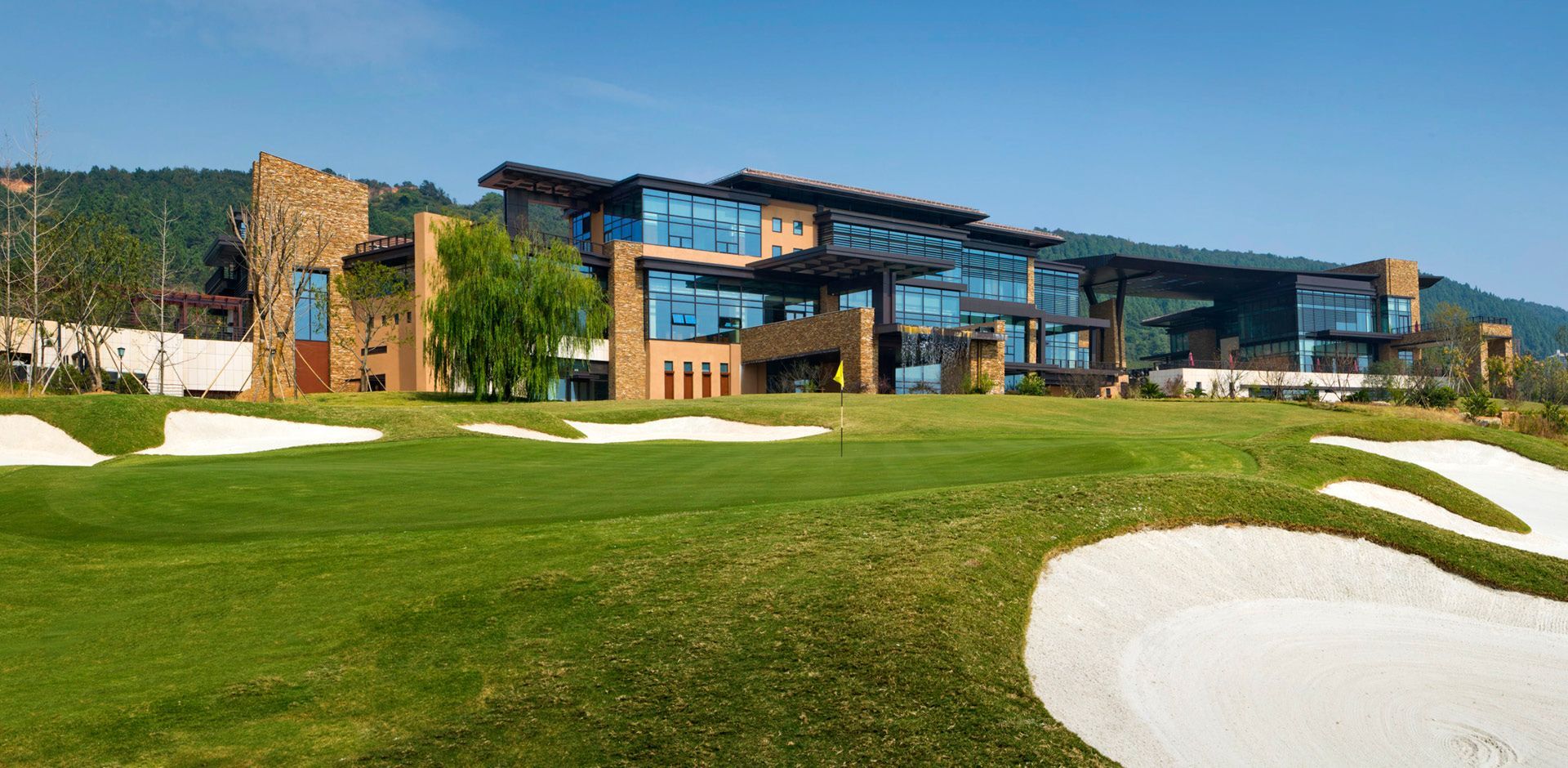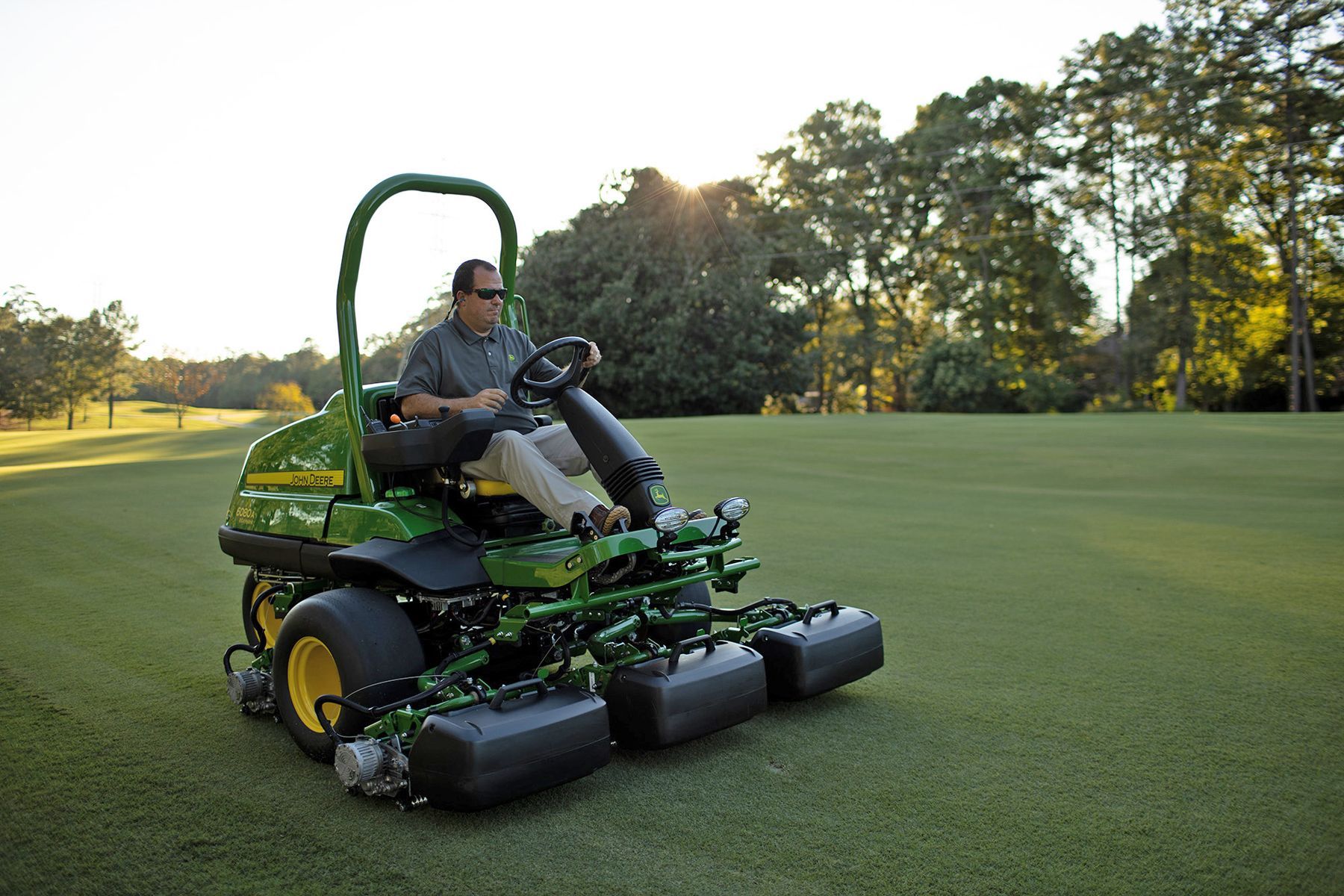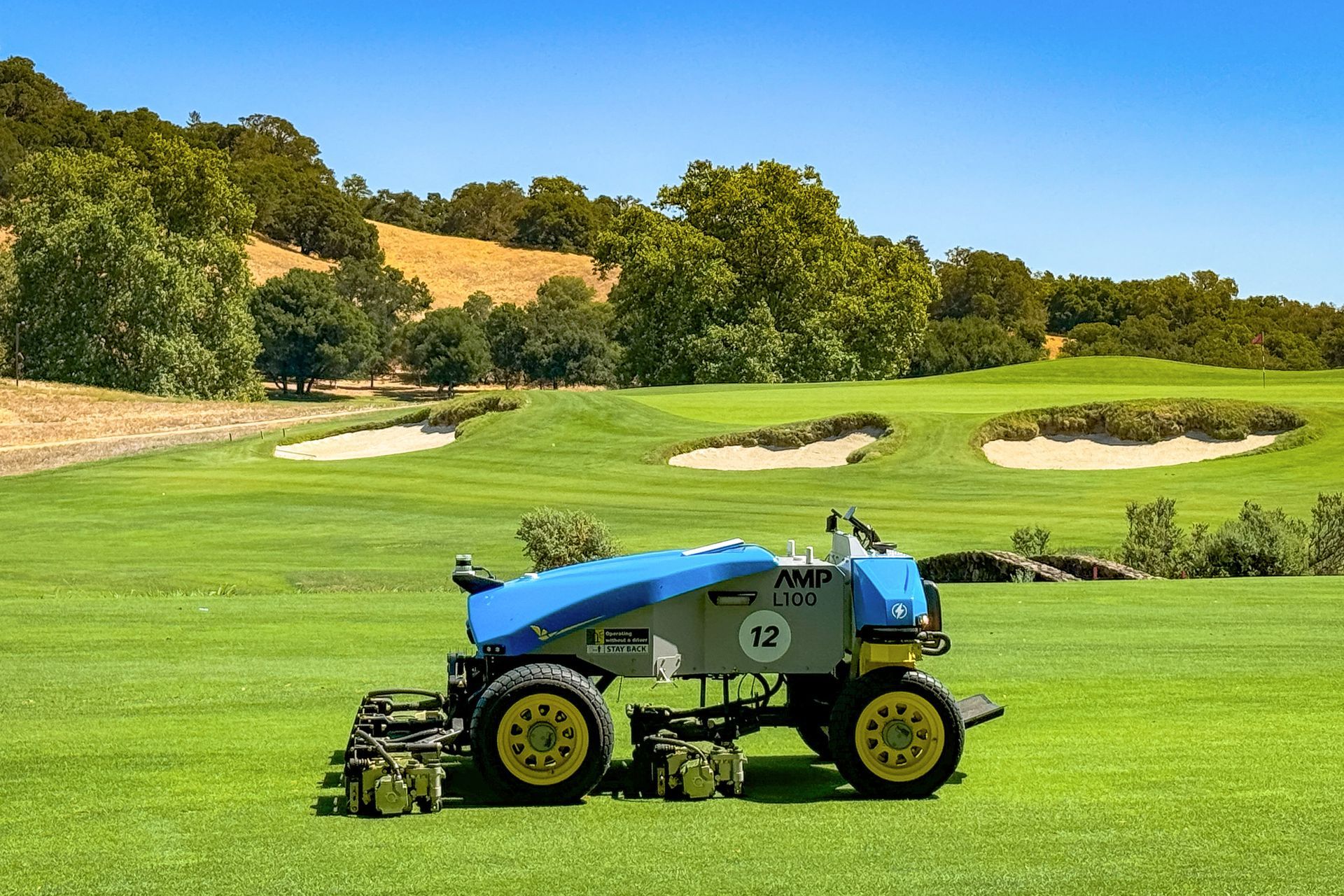July 26, 2025
Turf Tech 2025: What’s Next for Grass Care Equipment?

Exploring the Innovations Transforming Turf Management and Redefining How Golf Courses Maintain World-Class Playing Surfaces
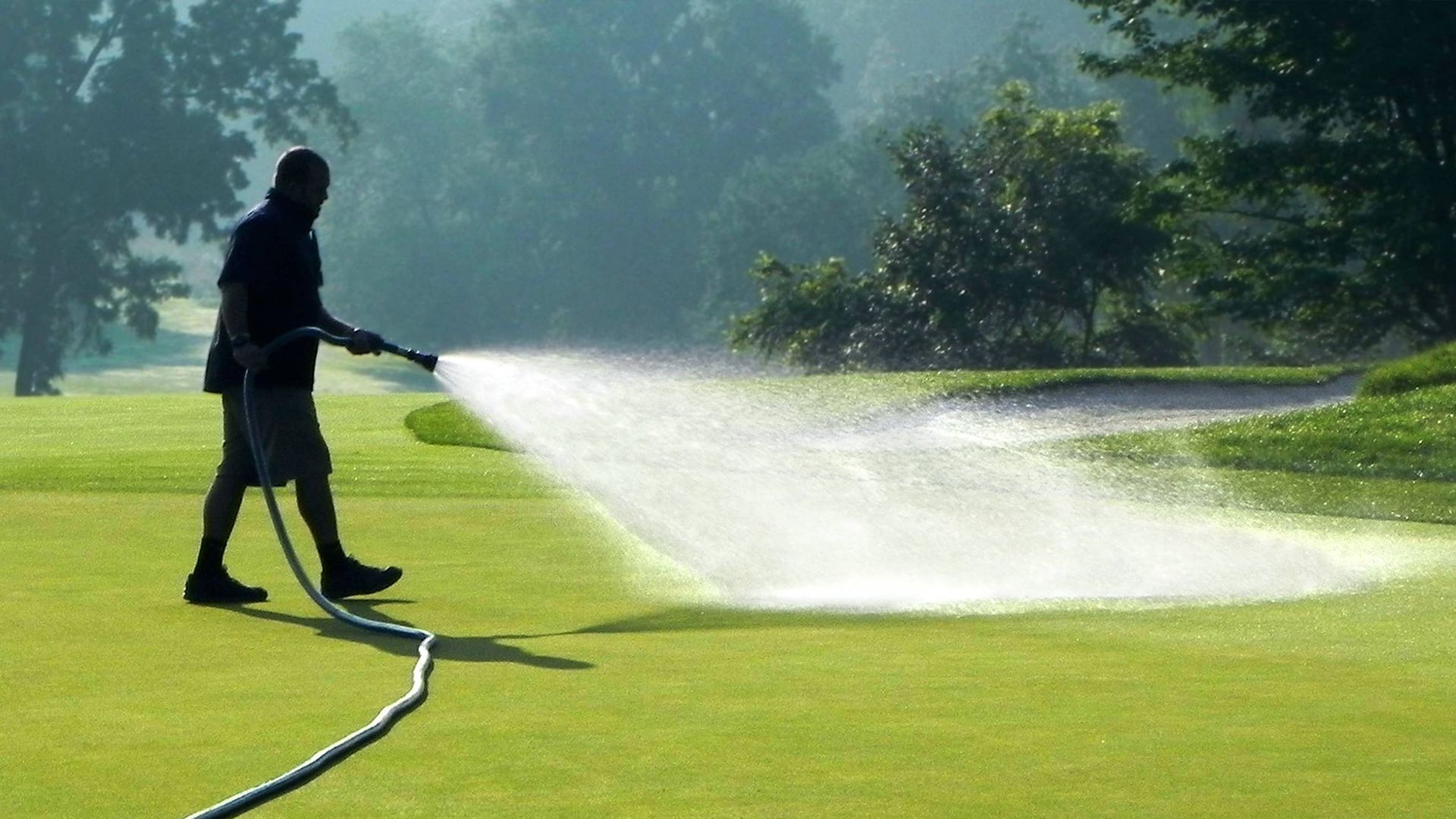
A New Era of Turf Management
Grass care has always been a blend of science and skill, but in 2025, that balance is shifting dramatically toward innovation. For decades, greenskeepers have relied on intuition, experience, and trusted equipment to maintain pristine playing surfaces. While those fundamentals still matter, technology is rewriting the playbook. The future of turf care will be defined not only by how well crews cut grass but by how well they collect, interpret, and act on real-time data.
What used to be a highly manual process is now becoming smarter, faster, and more interconnected. With GPS guidance, sensor integration, AI decision-making, and electric automation reshaping nearly every piece of turf equipment, superintendents are stepping into the role of systems managers as much as traditional groundskeepers. The next generation of equipment isn’t just efficient—it’s predictive. It knows where it’s going, what it’s cutting, and how to do the job with minimal waste and maximum impact.
As environmental pressures increase and labor markets tighten, technology is no longer a luxury—it’s a necessity. Golf courses must now manage turf more precisely than ever before, with tighter budgets, fewer hands, and rising golfer expectations. The machines and systems that support this work must be intelligent, adaptable, and aligned with operational goals.
This article dives into the world of turf tech in 2025—what's driving change, where innovation is headed, and how golf course operators can prepare for the tools and systems that will define the next era of grass care.
The Rise of Autonomous Mowing Systems
One of the most visible changes across golf courses in 2025 is the adoption of autonomous mowers. What started as a novelty or pilot project at top-tier clubs has now become a staple of modern groundskeeping. These self-driving machines roam fairways, rough, and even greens with near-perfect precision, following GPS-defined paths that eliminate overlap and reduce fuel or battery use.
The benefits of autonomy are broad. Labor challenges, once a constant headache, are now partially offset by machines that don’t need breaks, supervision, or scheduling. Crews that once had to focus on repetitive mowing tasks are now redeployed to higher-value work like detail edging, landscaping, or course beautification. This redistribution of effort improves the overall look and performance of the course.
Autonomous mowers also reduce equipment wear and tear by avoiding over-mowing or inefficient patterns. With smart route planning and terrain sensing, machines adapt to the slope, condition, and moisture of the turf in real time. Some systems even communicate directly with irrigation controls or turf health sensors, adjusting their behavior based on the needs of the grass rather than simply following a routine.
These machines represent a shift in how clubs think about mowing—not just as a task, but as part of a real-time data loop. They are no longer passive tools but dynamic actors in a connected maintenance system, helping clubs reduce costs, improve consistency, and elevate presentation standards every single day.
Electric and Hybrid Equipment Push Toward Sustainability
As sustainability becomes a defining value in golf course operations, equipment manufacturers have responded with a new wave of electric and hybrid machinery. Gone are the loud, fuel-hungry engines of past decades. In their place, quiet, emissions-free mowers, utility vehicles, sprayers, and rollers are taking the lead. These machines are not only environmentally friendly—they’re changing the experience of maintenance itself.
Electric equipment offers numerous operational advantages. It drastically reduces noise pollution, which benefits early-morning play and improves member satisfaction. It also reduces fuel costs and eliminates many of the emissions and exhaust hazards associated with traditional engines. This shift is particularly appealing to clubs located in environmentally sensitive regions or those seeking to certify their sustainability credentials.
Maintenance teams are embracing the change as well. With fewer moving parts, electric machines require less day-to-day upkeep. Breakdowns are less frequent, and diagnostic systems built into the machines help crews identify issues before they become major problems. Charging stations are replacing fuel depots, and battery swap systems make it easier than ever to keep equipment moving throughout the day.
Hybrid equipment is also gaining ground. These machines offer extended runtime by combining electric operation with internal combustion backup. They’re particularly useful on large properties where power demands vary or where long days of continuous operation are required. In 2025, more clubs than ever are mixing electric and hybrid fleets to meet performance goals while advancing sustainability and cutting long-term operating costs.
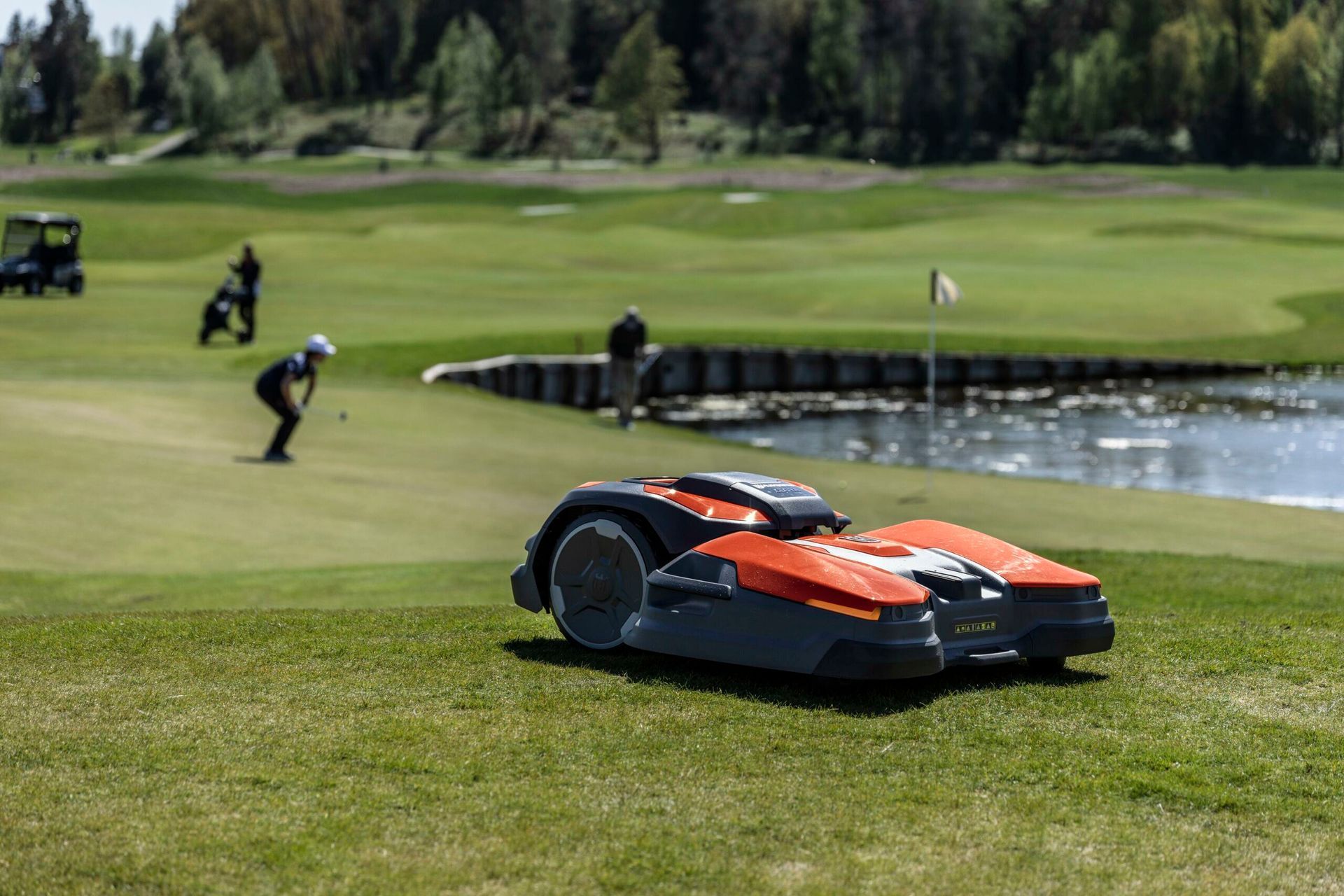
Sensor-Driven Precision and Smart Sprayers
In 2025, spraying isn’t just about coverage—it’s about accuracy down to the blade. One of the most exciting areas of advancement in turf equipment is the integration of sensors and precision spraying systems. Smart sprayers now scan turf in real time and adjust application rates based on grass health, soil moisture, disease pressure, or even traffic patterns.
This level of precision has massive implications for both budget and turf quality. By targeting only the areas that need treatment and adjusting volumes accordingly, clubs drastically reduce chemical use and waste. These savings add up quickly, especially across large fairway systems or during periods of frequent treatment. It also means better turf health, fewer burn spots, and more even application across playing surfaces.
Smart sprayers are integrated into broader management systems. Data from soil sensors, drones, or satellite imaging feeds into the sprayer’s control system, allowing crews to plan routes and applications based on predictive turf modeling rather than guesswork. Instead of a blanket application, superintendents are now working with pinpoint data that leads to smarter, more strategic decisions.
The impact on the player experience is subtle but powerful. Healthier turf, fewer chemical odors, and better visual presentation all contribute to the feeling of a well-maintained course. Meanwhile, behind the scenes, the savings and efficiency gains continue to grow, making smart sprayers a must-have in the modern maintenance toolkit.
Turf Drones and Aerial Intelligence
Above the course, drones have quietly become one of the most impactful tools in turf management. Initially used for marketing photography or general surveillance, drones in 2025 are fully integrated into maintenance routines. They monitor turf health, detect irrigation issues, assess wear patterns, and even scout for disease—all from above, in real time.
Multispectral imaging is one of the most powerful features of turf drones. These cameras detect variations in plant health invisible to the human eye. They allow superintendents to identify early signs of drought stress, compaction, or disease before symptoms appear. This gives crews more time to react, treat, or rotate turf use to avoid long-term damage.
Drones also map traffic patterns and help with logistical planning. By flying regular routes, they capture changes in turf density and wear based on player movement. These insights allow clubs to adjust cart rules, rotate tee and pin placements more effectively, or reroute maintenance patterns to reduce overuse in sensitive zones.
The result is a smarter, more responsive approach to turf care—one that shifts from reactive to proactive. As drones become easier to use, more affordable, and better integrated into turf management systems, their value continues to rise. In 2025, forward-thinking clubs aren’t just flying drones—they’re building entire operations around the insights they provide.
Fleet Management and Real-Time Equipment Tracking
The days of guessing where your mower is or how long a job will take are over. In 2025, real-time fleet tracking has become a cornerstone of efficient maintenance operations. GPS-enabled equipment now feeds live data to central dashboards, giving superintendents and maintenance managers instant visibility into where every machine is, what it's doing, and how long it’s been running.
This visibility transforms operations in several ways. First, it improves scheduling. Managers can assign tasks dynamically, rerouting crews as needed to respond to weather, events, or time-sensitive needs. Second, it reduces downtime. If a machine strays from its intended route or sits idle too long, alerts prompt intervention, preventing wasted labor and delayed maintenance.
Tracking systems also contribute to safety and accountability. If equipment leaves designated boundaries or behaves unexpectedly, automated notifications help prevent damage or liability. Staff can review usage history, check operator logs, and even monitor wear and maintenance schedules based on actual usage—not just calendar days.
Over time, the data collected becomes a treasure trove for strategic planning. Clubs can analyze how often machines are used, how much fuel or electricity they consume, and where bottlenecks occur in daily operations. These insights support better purchasing decisions, smarter labor planning, and overall smoother course care from tee to green.
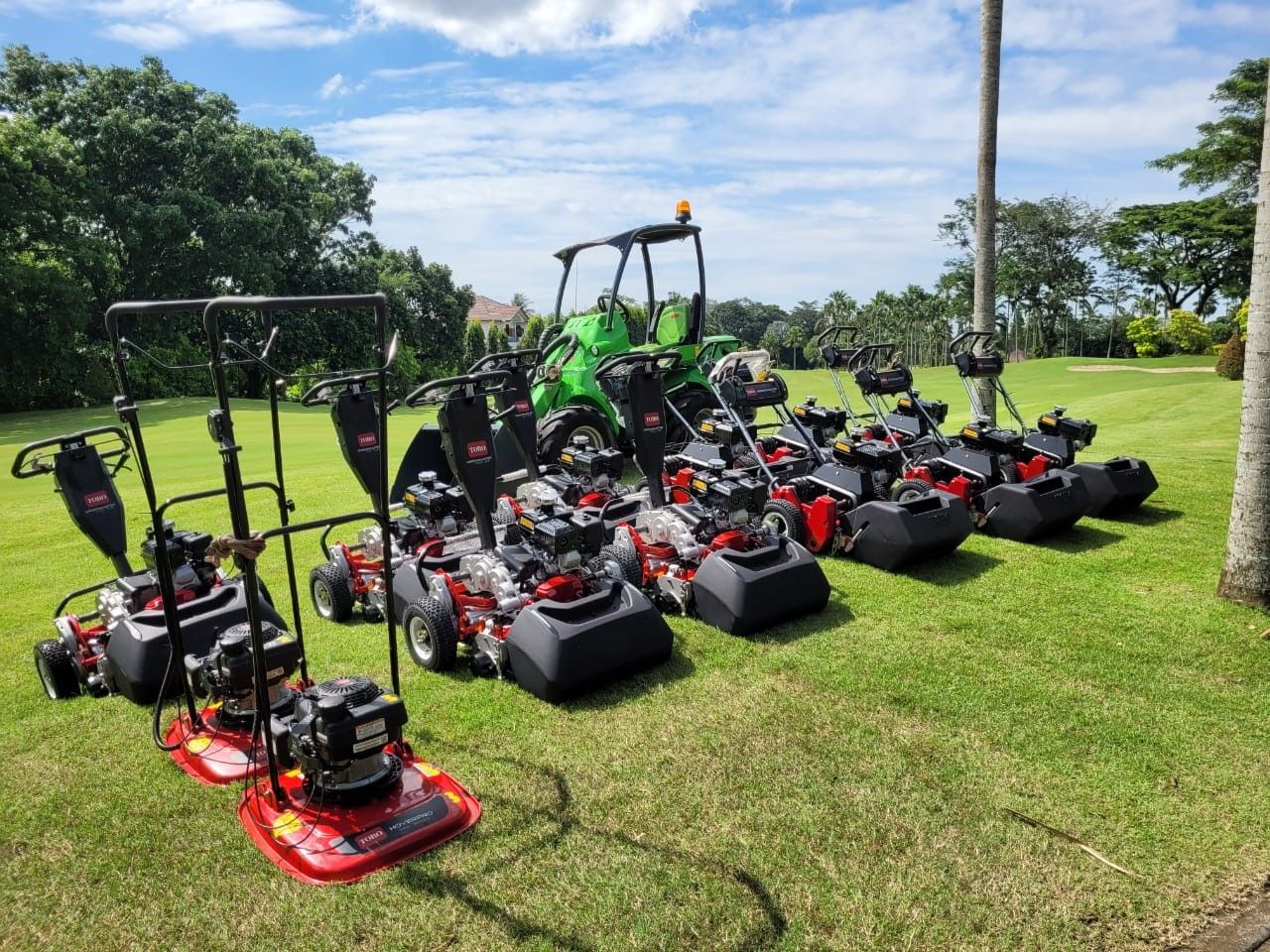
Irrigation Technology Meets Turf Intelligence
Water is the most precious—and often most challenging—resource in turf management. In 2025, irrigation systems have gone far beyond simple timers and manual zones. Today’s leading systems integrate turf sensors, weather forecasting, GPS mapping, and real-time course data to deliver exactly the right amount of water to every square foot of the property.
Modern irrigation systems are not just smarter—they’re intuitive. They draw from weather data, evapotranspiration models, and soil moisture readings to make continuous adjustments. A green on a shaded hillside may receive a different watering cycle than a sun-exposed fairway, and these micro-adjustments occur without human intervention.
The environmental benefits are enormous. Efficient watering reduces runoff, prevents disease, and supports healthier turf with less waste. Courses using intelligent irrigation report reductions in water use by as much as 30–50%, which translates into significant cost savings and environmental credits in regions where water is regulated or metered.
Maintenance teams benefit too. Alerts from the system notify them of leaks, low pressure, or stuck valves before they become visible problems. Historical data helps identify patterns and optimize long-term planning. And because these systems integrate with other tech platforms like drones or GPS mowers, the entire course begins to operate as a responsive ecosystem—one where water, nutrients, mowing, and labor are all in sync.
AI Decision Engines and Predictive Turf Management
Artificial intelligence is no longer just a buzzword—it’s a driving force in turf tech strategy. In 2025, AI decision engines are being used to synthesize data from dozens of sources: drones, mowers, soil sensors, weather feeds, historical logs, and maintenance records. These systems don’t just collect data—they interpret it, offering recommendations or even taking automated actions in response.
For example, an AI system might notice turf stress increasing in a particular fairway zone. It could cross-reference weather history, mowing frequency, and player traffic, then recommend reduced mowing, increased watering, or rerouting carts to preserve turf health. Instead of relying on human observation alone, maintenance teams now have a digital assistant working behind the scenes 24/7.
AI also supports inventory and maintenance planning. By tracking usage patterns and degradation rates, systems can predict when parts will fail or when a blade needs sharpening—well before it affects cut quality. This reduces breakdowns and eliminates emergency repairs, leading to a more consistent maintenance rhythm across the season.
The biggest value, however, may be the ability of AI to spot patterns that human teams miss. Over time, the system becomes more refined, learning the quirks of each course and adapting recommendations accordingly. Golf clubs using AI effectively in 2025 are not just reacting to issues—they’re staying one step ahead, every day, on every hole.
The Human Element: Training, Adoption, and Buy-In
Even the best technology will fail if the people using it aren’t trained or motivated to make it succeed. That’s why one of the most important trends in 2025 is the emphasis on workforce training and cultural alignment around turf tech. Equipment may be getting smarter, but clubs still need smart people who know how to apply it.
Training in 2025 includes more than just how to operate a mower or spray rig. It covers data interpretation, digital planning, and cross-platform coordination. Crew leaders are becoming technicians, understanding not just how machines move but why they move that way. Operators must now read dashboards, understand GPS paths, and follow best practices based on real-time feedback.
Clubs that succeed with tech adoption have made it part of their culture. They celebrate efficiency gains, share data across teams, and involve the entire staff in performance goals. Groundskeepers aren’t just told what to do—they’re invited into the process, shown how the tech improves their work, and encouraged to contribute ideas.
When staff see that technology makes their jobs safer, faster, and more impactful, adoption happens naturally. And when managers provide the training, tools, and support to help their team grow, the result is a unified maintenance operation that doesn’t just use turf tech—it thrives on it.
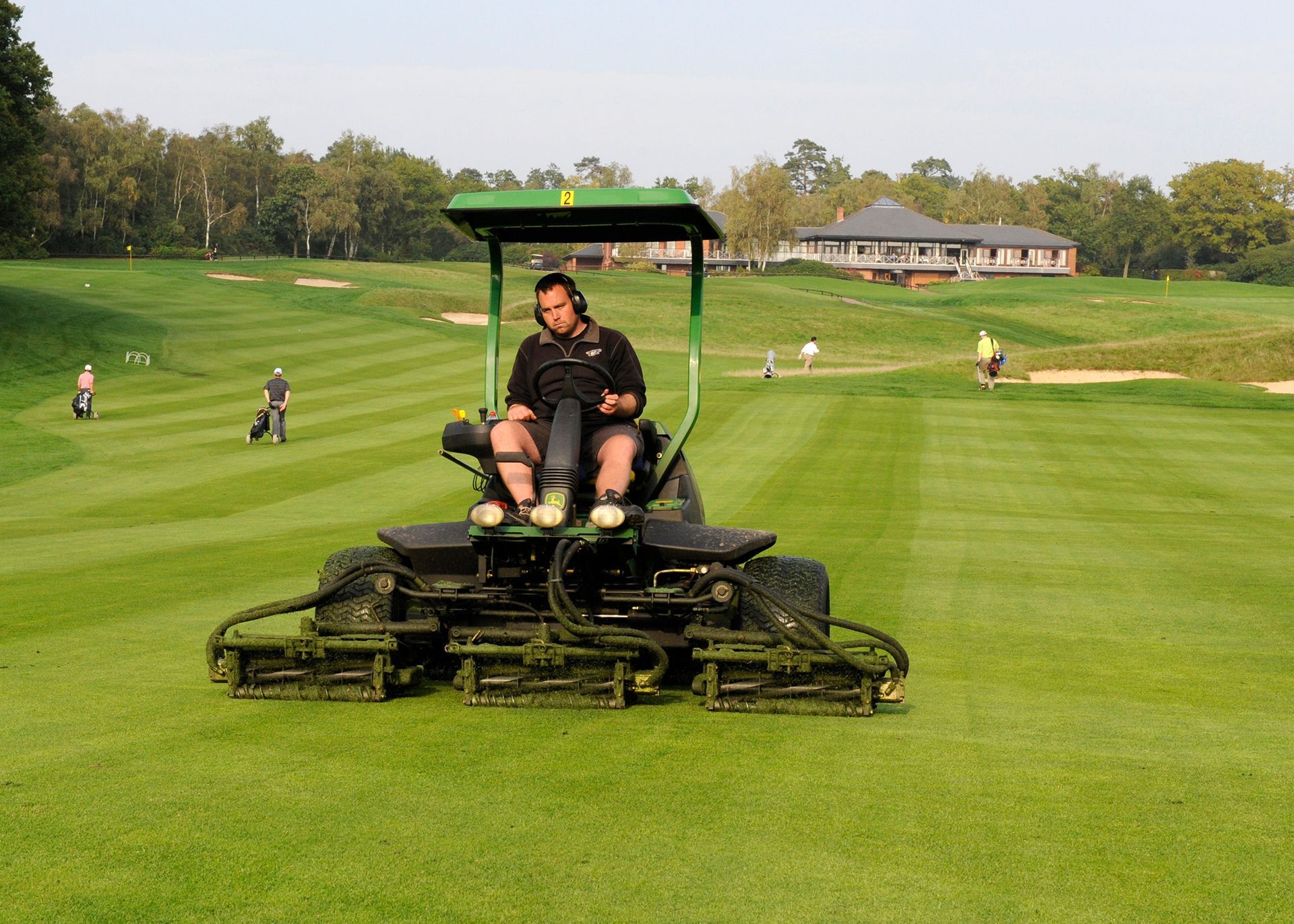
Fairway Control and the Connected Course of Tomorrow
As turf technology continues to evolve, the systems that connect and coordinate all of it become just as important as the machines themselves. That’s where integrated platforms like Fairway Control come in. Rather than managing mowers, irrigation, and scheduling through separate systems, golf clubs in 2025 are embracing unified software to oversee the entire course as a connected operation.
Fairway Control helps courses tie together real-time tee sheet data, maintenance schedules, weather alerts, and staff assignments—all in one intuitive platform. It bridges the gap between what’s happening on the turf and what needs to happen in the clubhouse, on the cart paths, and behind the scenes. By centralizing information, it reduces confusion, eliminates double-work, and helps operations move in perfect sync.
Clubs that implement Fairway Control are seeing measurable improvements: fewer delays, lower maintenance costs, more efficient use of equipment, and a smoother experience for players. Whether it’s coordinating turn-time food delivery with rough mowing schedules or planning tournament prep in real time with live crew tracking, the platform brings visibility and agility to every aspect of turf management.
The future of grass care isn’t just about smarter machines—it’s about smarter systems. Fairway Control gives clubs the tools to lead that future confidently, making sure every blade of grass, every piece of equipment, and every member of the team is working in harmony.
More from Fairway Control
